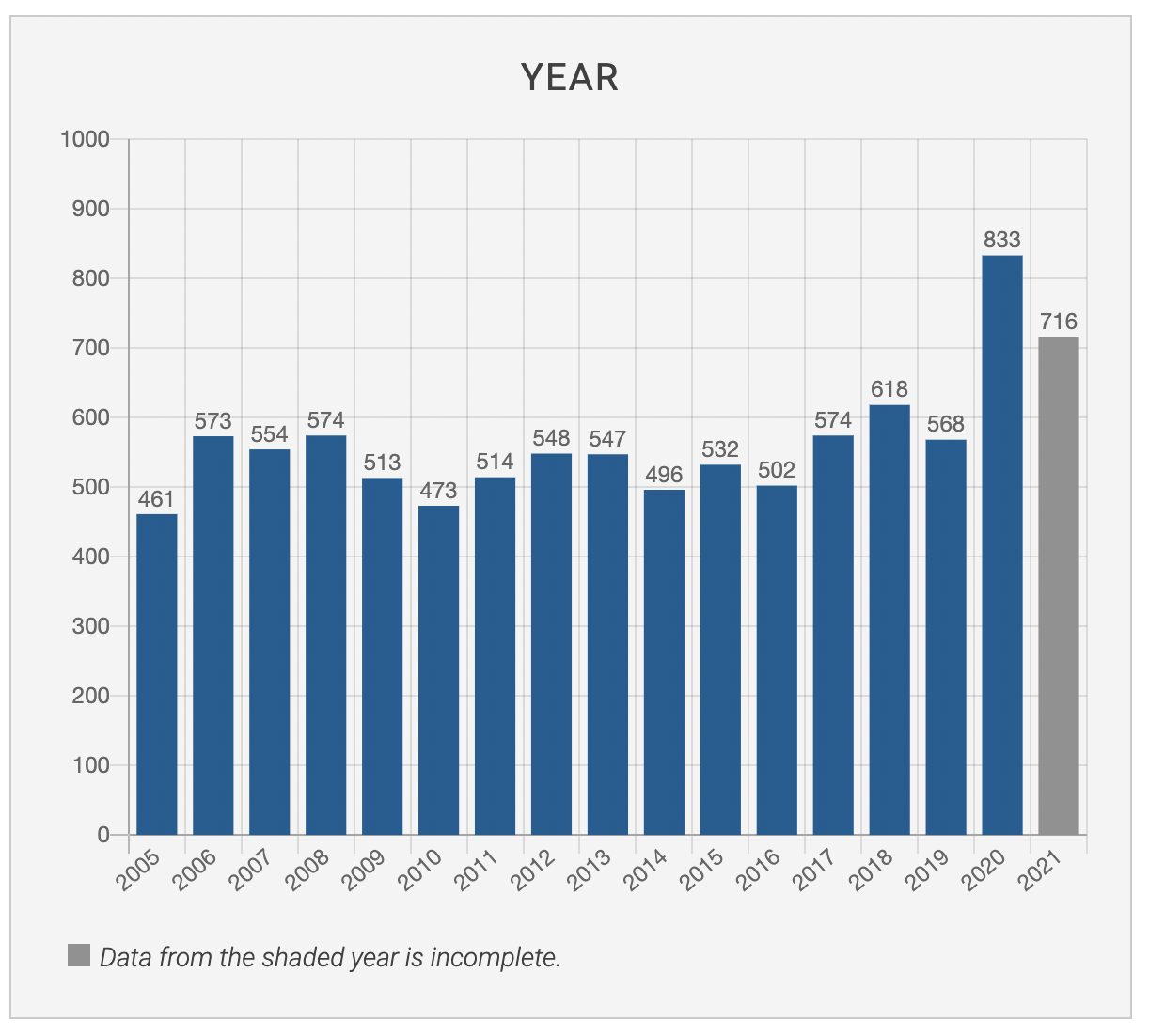COVID-19 drives spike in deaths in Texas prisons and jails in 2020

According to custodial death data, 2020 was the deadliest year on record for people who were incarcerated in Texas prisons and jails (see graph above). At least 830 individuals died in Texas prisons and jails, an increase of 46% over the previous year (2019), based on reports filed with the Texas Office of the Attorney General. This increase was largely driven by the coronavirus, which – agencies self-reported – killed at least 278 people in prisons and jails last year.
Broken out on its own, COVID-19 was the second-highest cause of death in jails and prisons, accounting for 34% of 2020 deaths, behind all other natural causes/illnesses at 50%. Excluding COVID-19 fatalities, deaths from natural causes in 2020 were consistent with previous years. Historically, natural causes account for more than three quarters of deaths in jails and prisons. Between prisons and jails, prisons saw both the highest number of deaths overall (84%) and the highest concentration (92%) of COVID-19 deaths. Among incarcerated individuals over the age of 50, COVID-19 accounted for at least 40% of deaths.
As the COVID-19 pandemic took hold in the U.S., there was a brief acknowledgement of the unsanitary and cramped conditions – which are also a breeding ground for the novel coronavirus – characteristic of U.S. detention centers. States across the country dramatically downsized their incarcerated population and granted compassionate release to those already infected with (or more likely to die from) COVID-19. However, in Texas, explicit policies to reduce populations during the pandemic were few and far between, according to the Prison Policy Initiative.
The data on conditions in Texas facilities was often inaccurate and unreliable. The tracking dashboard maintained by the Texas Department of Criminal Justice occasionally had disclaimers stating that the data was unreliable. TDCJ also published announcements when incarcerated individuals and employees died of COVID-19, but those posts have become sporadic at best. Additionally, agencies also took longer to file their custodial death reports, some showing up months after the 30-day deadline as required by state law. Lastly, changing, incomplete or vague reporting of the precise cause of death made it difficult for watchdogs, like TJI, to capture all COVID-related deaths in their reporting. For example, during the pandemic, TJI started tracking deaths that are reportedly caused by “bronchopneumonia,” a cause that didn’t exist much on reports before 2020.
Beyond being a tragic example of the deadliness of COVID-19, the spike in deaths within Texas jails and prisons in 2020 raises questions about the conditions that make those facilities uniquely vulnerable to outbreaks. The lack of disinfectants and poor medical care, in conjunction with cramped conditions and the negative impacts of living in a high stress environment, all contribute to making jails and prisons inherently unsafe and, in 2020, increasingly deadly spaces. Worst of all, this trend doesn’t seem to be slowing down: 2021 has already exceeded 2019 totals by 6%, with 600 deaths reported as of the end of October.
NOTE: For the purposes of this analysis, custodial death reports were cross-referenced against manually-gathered reports from media and other law enforcement sources to determine whether a death was due to COVID-19. Data was pulled in the first week of November 2021.
